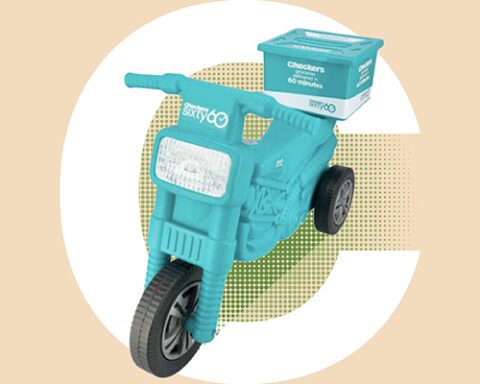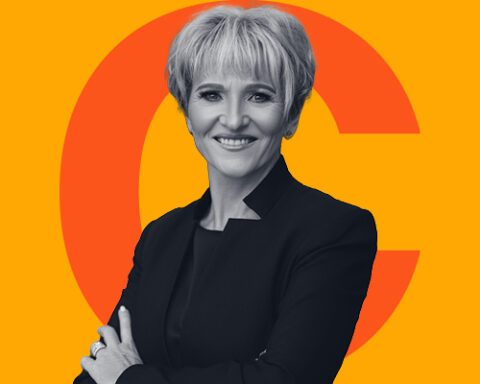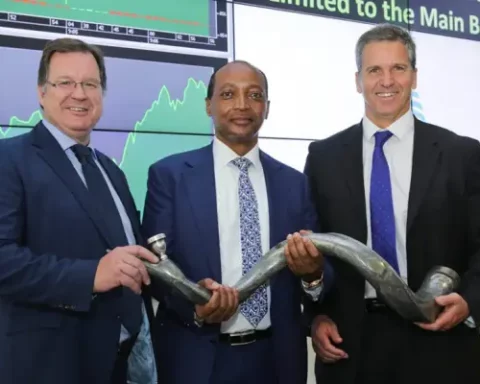Boxer has endured something of a Cinderella status since it was acquired by Pick n Pay back in 2002. Its management kept a low profile at results presentations for most of the intervening years and were never seen at AGMs.
Twenty-two years later this Cinderella is not only dressed up for the big ball, she’s paying for it. What an about-turn.
Now that it’s been let out of the attic (Cinderella-style), Boxer (share code BOX) is keen for everyone to know just how superb it is. In preparation for its imminent listing, it has disgorged a stack of information about a consumer sector largely overlooked by investors, analysts and the media. The amazed response from analysts augurs well for the listing. And not just because it’s an IPO-starved market.
It’s not quite up there with the purchase of Tencent by Naspers, but the 2002 acquisition – for a mere R185m – is providing Pick n Pay with the best chance, possibly the only chance, of survival. Proceeds from listing – an R8.5bn chunk – will release Pick n Pay from the grip of the banks and free up hundreds of millions of rands in annual interest payments. And Pick n Pay will still be left with a 60% stake, the dividends from which will help get it back on its feet. (Mind you that dividend flow could be a later source of conflict as suggested in the long risk section of the pre-listing statement.)
Investment management company Urquhart Partners says the listing price range of R42 to R54 per share implies a market cap of R21bn to R25bn for Boxer, and a price earnings ratio of between 15 and 18, based on its full-year earnings forecasts.
So not only is Boxer saving its holding company, but as a standalone listed entity it is also offering unexpectedly exciting growth opportunities for investors. Who would have thought the discount grocery market presented such profitable growth opportunities?
“It’s generating really good quality, high returns,” says Opportune Investments CEO Chris Logan, a long-term Pick n Pay shareholder. Logan believes there’s lots more to come.
‘Potential for organic growth’
Boxer’s just-released pre-listing statement is awash with details of an exceptionally attractive market segment that, as Logan suggests, offers not just strong growth but generous margins. The market’s previous indifference to the sector looks set to change.
“With the South African economic outlook showing promising growth prospects for the grocery retail market, and the current discounter penetration of 6.2% in 2023, together with the expected growth of 6.4% CAGR [compound annual growth rate] through to 2027, Boxer has considerable potential for organic growth,” says the company in its pre-listing statement, noting that the 6.2% penetration is well below global averages.
Of course, we mustn’t forget the important role Pick n Pay played in setting it on its current trajectory. The group was established in KwaZulu-Natal in 1977 and by 2002 was a chain of just 36 stores; small enough to avoid problems with the Competition Commission, which granted the acquisition unconditional approval.
With Pick n Pay’s backing it grew to 150 stores by 2013, helped by the launch of Boxer Build and Boxer Liquors. It then began to reinvent the Boxer formula, repositioning itself as a “limited-range soft discount retailer” which, says the group, positions it between traditional grocery supermarket retailers and hard discount retailers.
Fortunately, for whatever reasons – and many are suggested – the Pick n Pay management team left Boxer to its own devices. By August 2024 it had 300 Superstores, 159 Boxer Liquors and 30 Boxer Build stores across South Africa and Eswatini, and annual turnover of about R37bn. That’s not huge in the scheme of things. After all, Pick n Pay’s total turnover – including Boxer – is R112bn; and then there’s Shoprite with annual turnover of R240bn. With a share of the total formal grocery market of just 4.2% Boxer does look like small fry.
The margins tell a more interesting story, though. Boxer’s 5% plus trading margin is sparkly compared to Pick n Pay’s 2.7%. It is in line with Shoprite’s 5.6%.
Making inroads
However, the really interesting story is about growth prospects and, right now, Boxer’s look amazing. According to a recent Futureworld Market and Customer Report, while Boxer may be small in the formal grocery market it is the dominant player in the formal discount grocery market with a 68.2% share – more than double the 29% that Shoprite subsidiary Usave controls.
And the thing is this dominance happens to be in the fastest-growing segment of the grocery market – the low-income segment. There are compelling reasons: population growth, predominantly at low-income levels; an increasing percentage of disposable income being spent on food with growing price sensitivity of consumers; and social grant spending expected to increase to R300bn in 2027 from R250bn in 2023.
There’s also significant scope for Boxer to expand into regions it doesn’t currently serve. The company reckons there’s a potential R105.5bn up for grabs.
In addition, there’s the informal grocery retail market. This is expected to grow to R494bn in 2027. “This market presents a massive opportunity for industry participants that can successfully enter and leverage the right capabilities to drive substantial growth,” says the Futureworld report quoted in the Boxer pre-listing statement.
Little wonder that the International Finance Corporation is taking up R350m worth of stock in Boxer as a “cornerstone” investor.
Alec Abraham, senior equity analyst at Sasfin, is a little more cautious when it comes to Boxer’s ability to make dramatic inroads into the informal sector of the market. “Spaza shops play an important role in that market and are very effective,” Abraham tells Currency, noting their “break bulk” operational model is particularly attractive for low-income consumers in the second half of the month. He says the informal grocery retail market has long been the domain of small private groups. “Some own just one store, others own five or more.” They are entrenched in the market.
One industry insider tells Currency that he agrees about the important role played by small independent traders but says Boxer can make inroads by enforcing higher product standards particularly when it comes to expired goods.
“There’s a lot of expired stuff going through the informal market,” he says.
That dubious quality of goods sold has been tragically highlighted by the spate of child deaths across the country in the past few weeks.
A stable leadership team
Boxer is unashamedly bullish about its prospects and believes “innovative solutions such as Boxer Bulk Online” offer opportunities to make inroads into the informal segment.
The listing will also help give the group access to larger pools of capital to fund its growth plans.
Indeed, in dressing itself up so attractively for the JSE ball, Boxer may have inadvertently drawn a target on its back. You have to wonder why Shoprite is making such a determined effort to grab market share from Woolworths when the lower end of the market offers better growth and great margins.
The industry insider tells Currency there’s little doubt the AI-obsessed Shoprite team knows precisely what is going on. “They know better than anyone what is going on in every corner of every part of the market, but right now the Shoprite team is after Woolworths, they don’t have the mindset to go after Boxer.”
Boxer is, he adds, currently the best run grocery business in South Africa. “It’s run on a simple model.”
Encouragingly, given all the CEOs that have passed through Pick n Pay since Sean Summers signed off on the 2002 acquisition, Boxer has had a remarkably stable leadership team. Current CEO Marek Masojada was head of finance at the time of the deal, for example.
Despite Masojada’s evident long-term commitment to the group and his obviously sterling motivation, the group has decided that the listing necessitates a once-off R19m retention and motivation payment to him. The award is subject to three-year performance measurements. He’ll also pick up a R3m cash bonus. Masojada’s total remuneration in financial 2024 was R16.5m.
Of course, the fact that Boxer has solved Pick n Pay’s immediate debt problems doesn’t mean this once-dominant player is now out of the woods; for now it’s just out of the clutches of the banks. There’s much work just to get it onto a secure footing. In that regard Abraham reckons the best Summers can hope for is to cut costs and consolidate a reduced position in the market. “I don’t see them regaining market share, but they can be profitable,” he says.
Then there’s the issue of who succeeds Summers. Any money on Masojada or someone else from the Boxer team?
ALSO READ:
How Pick n Pay shortchanged retail investors with Boxer’s IPO
Sign up to Currency’s weekly newsletters to receive your own bulletin of weekday news and weekend treats. Register here.










